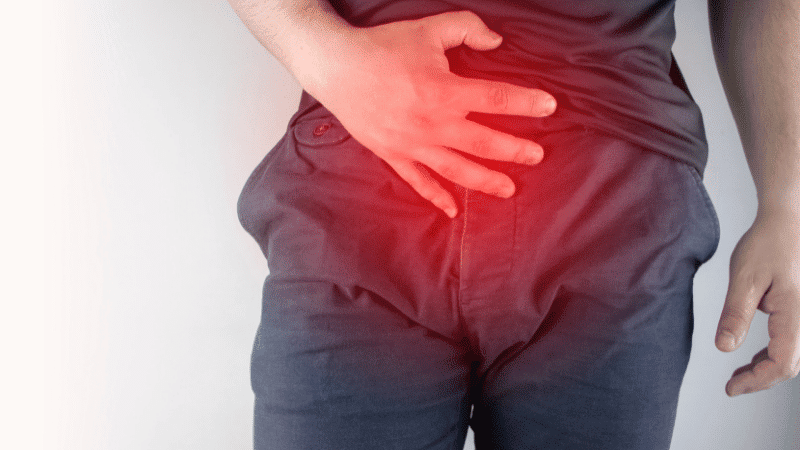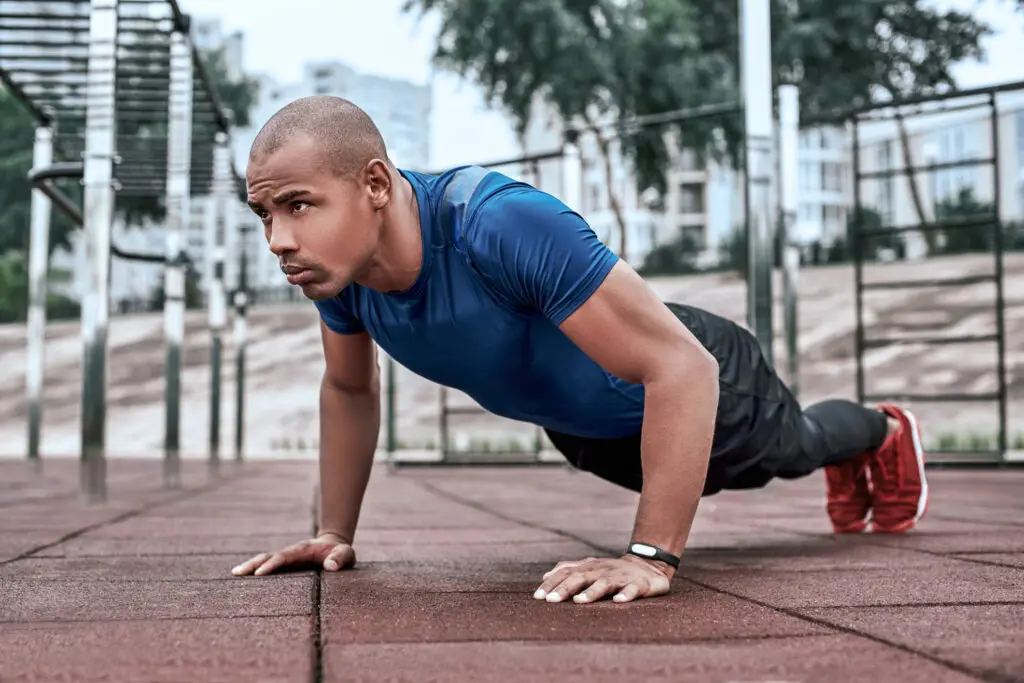What Is It?
Core muscle injuries have been called athletic pubalgia and sports hernia, but this injury does not fit the common definition of a “hernia,” where an organ or soft tissue protrudes outside its normal cavity.
There is no defect in the abdominal wall or herniation of the abdominal contents with a sports hernia. The injury occurs in the form of tears and weakening in the deep layers of the abdominal wall.
A core muscle injury usually occurs where the abdominal muscles attach to your pelvis. There is no protrusion of organs, but there are tears in tendons and muscles, such as those surrounding the hip.
This makes the term “hernia” a misnomer, as the term hernia means when organs from your abdomen come out through spaces, such as the inguinal canal. Nerve irritation can also occur, contributing to the uncomfortable symptoms.
What Causes It?
Core muscle injury, often misleadingly called a “sports hernia,” is a condition that mainly affects athletes who play soccer, hockey, football, and rugby, and who run track.
Repetitive hip and pelvic motions typical in sports can cause injury to the lower abdominal area.
Imbalances between the hip and abdominal muscles can, over time, cause overuse and injury. Weakness and lack of conditioning in the abdominals also might contribute to the injury.
Ironically, aggressive and unsafe abdominal exercise programs can also cause or aggravate a core muscle injury. It is more common in males than females.
A full 94% of these injuries occur gradually from unknown causes; the other 6% are caused by a specific traumatic incident, such as being “checked” from behind while playing hockey.
Stress from repetitive twisting, kicking, and turning at high speeds is a likely cause of injury. Casual exercisers and nonathletes can also experience this kind of injury.
Physical therapists can help individuals with core muscle injury improve their abdominal and hip strength and flexibility in order to safely return to their desired sport or activities. Physical therapists are also part of the pre-habilitation and rehabilitation team for people who require surgery for core muscle repair.
How Does It Feel?

Chronic groin pain is a hallmark symptom of core muscle injury. It occurs in 5% to 18% of athletes and varies with the sport being played. Sharp groin pain with exertion is also a typical symptom.
Pain often occurs exclusively with intense sprinting, kicking, twisting, or “cutting,” and subsides rapidly with rest. Significant training and competition time can be lost due to related chronic groin pain.
With a core muscle injury, you may experience:
- Sharp or stabbing pain in the groin region that occurs mainly with running, sprinting, cutting, pivoting, kicking, or twisting.
- Pain felt while performing abdominal sit-ups.
- Pain that is often isolated to 1 side of the groin.
- Pain that radiates into the inner thigh.
- Pain isolated to the groin when coughing or sneezing.
- Minimal to no pain in the groin when resting, sitting, or sleeping.
- Tenderness to touch or pressure on the lower abdominal area.
Can It Be Diagnosed?
If you see your physical therapist first, your therapist will conduct a thorough evaluation that includes taking your health history.
Your therapist may ask whether you:
- Have groin pain that occurs when you are sprinting, twisting, or kicking.
- Have had any injuries to your hip, low back, or groin.
- Have recently completed any intense abdominal or core strengthening exercises.
- Get relief from your groin pain if you rest or don’t participate in your regular sport or exercise routine.
- Feel pain in your groin when coughing, sneezing, or “bearing down.”
- Recall a particular movement or incident when you first felt pain in the area.
- Experience groin pain that limits your desired level of sports performance.
Your physical therapist also will conduct standard strength tests of your hip muscles, and tests to measure the flexibility of your hip and thigh muscles. Your physical therapist will assess how well you can isolate or contract certain muscles.
A thorough examination of your hip and low back movements may also be performed. Your physical therapist may use additional tests to investigate for knee joint or lumbar spine injuries.
To provide a definitive diagnosis, your physical therapist may collaborate with a sports medicine physician or other health care provider.
The physician may order further tests—such as magnetic resonance imaging (MRI) — to rule out other injuries to your hip, low back, or pelvis, and further confirm the diagnosis of a core muscle injury.
How a SportsCare Physical Therapist Can Help:
Physical therapy will focus on addressing the key problems that are found during your evaluation to provide proper core muscle injury treatment.
The key issues that are often found with this injury include poor hip strength and flexibility, and a reduced ability to activate or turn the abdominal muscles to stabilize the pelvis.
Targeted physical therapy treatments will address your condition without worsening or reproducing your pain.
Your physical therapist will also caution you to avoid certain activities and exercises that cause groin pain. Ice may also be applied to decrease pain in the area of injury. Your therapist may advise you to:
- Avoid aggressive or painful stretching.
- Avoid stretching your trunk and upper body.
- Avoid doing sit-ups.
Your physical therapy treatment may include:
- Icing and compression. During the initial phases of injury or when high levels of pain are being experienced, application of ice to the area may decrease pain levels.
- Stretching. Your physical therapist may help you perform hip and low back exercises to gently stretch and strengthen your muscles. Your therapist will educate you on the proper duration and frequency of exercises to improve muscle flexibility and decrease pain.
- Muscle retraining. Your physical therapist will teach you to target or activate the abdominal and hip muscles. This is a key part of your treatment; certain muscles may not be “firing” or contracting due to pain and inhibition.
- Strengthening. Targeted hip strengthening and non-aggravating core strengthening will be started once you are no longer experiencing pain.
- Manual therapy. Hands-on stretching, soft-tissue mobilization, and joint mobilization may be performed by your physical therapist based on your evaluation. Manual (hands-on) therapy may be performed to improve your hip-joint mobility and range of motion, or ease muscle pain and improve flexibility.
- Return-to-sport drills. Once you are able to progress without pain during treatment, your physical therapist will add movements specific to your sport or activity into your treatment program. For instance, you may return to running and light sports drills to prepare your body for the stress of full participation in your sport.
Some cases of more severe injury may require surgery. Most patients with a core muscle injury are advised to first attempt a conservative course of treatment for 4 to 6 weeks.
If groin pain continues to occur after that time, surgery may be recommended. If you decide to have surgery, your therapist can help you regain your strength and flexibility following the procedure.
If you or someone you know is suffering from a Core Muscle Injury or Sports Hernia, contact your local SportsCare Physical Therapy Center to schedule an appointment today.
You can also find the nearest location by texting your ZIP Code to 1-844-700-0013. To conveniently request an appointment online, follow this link.


